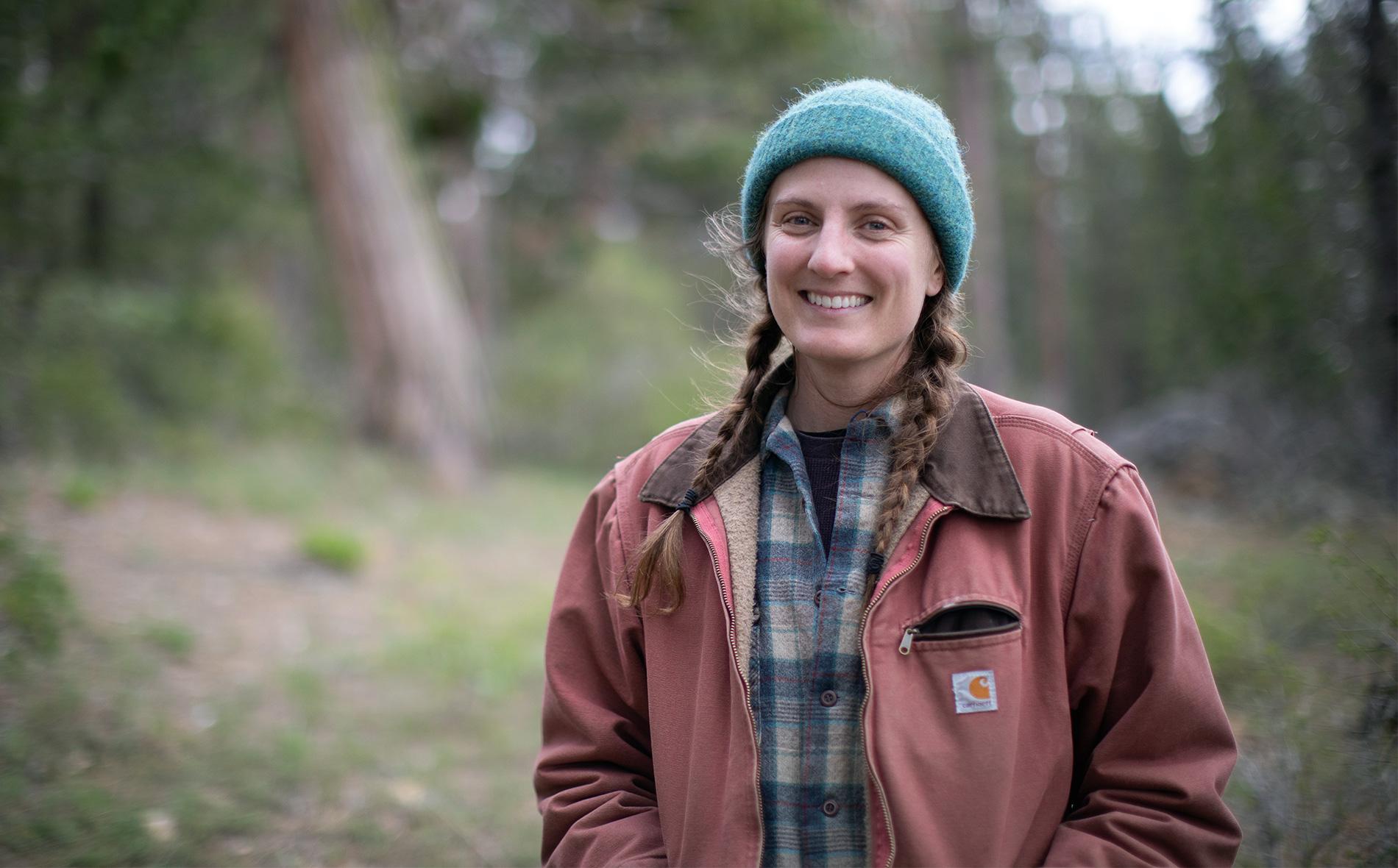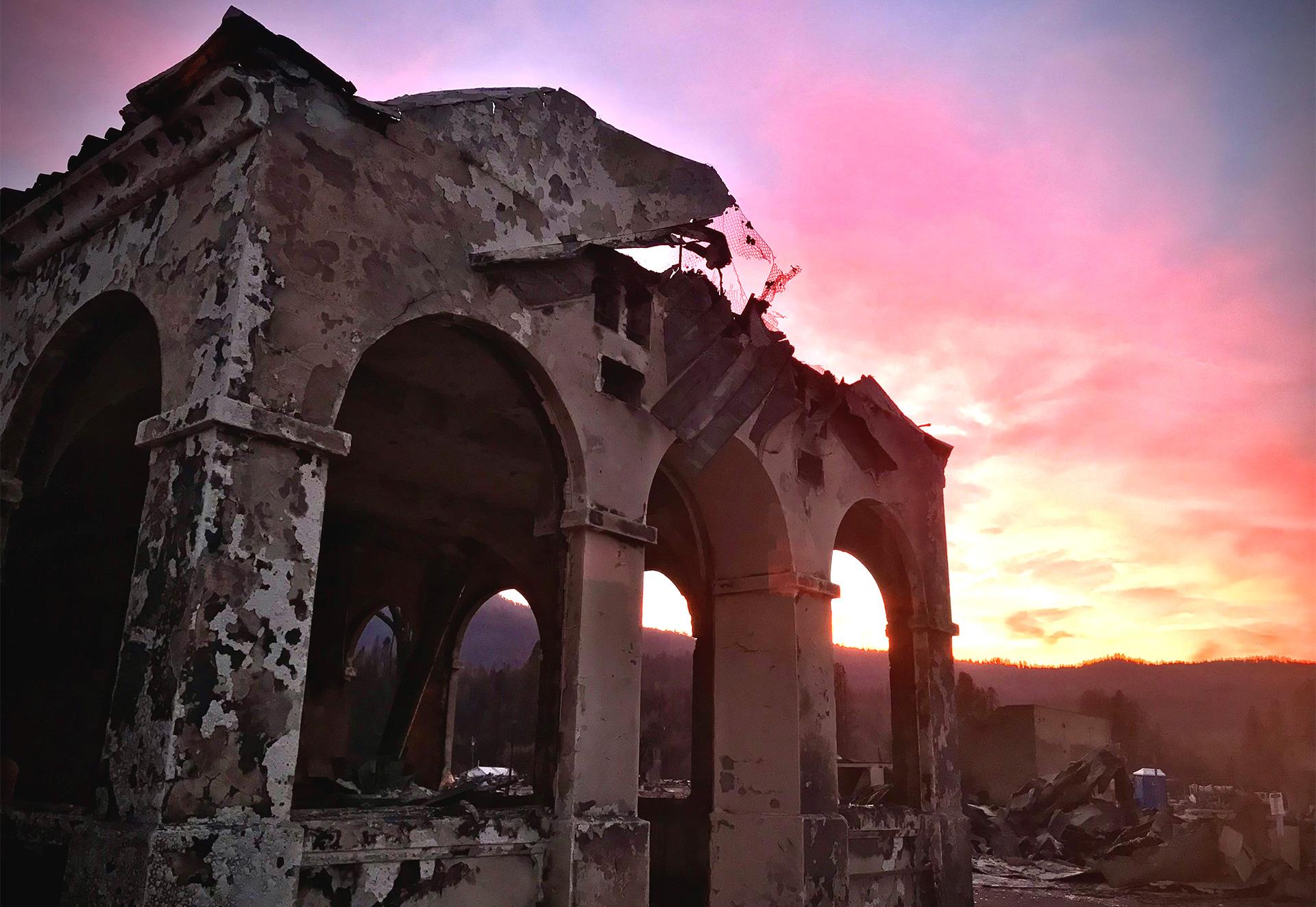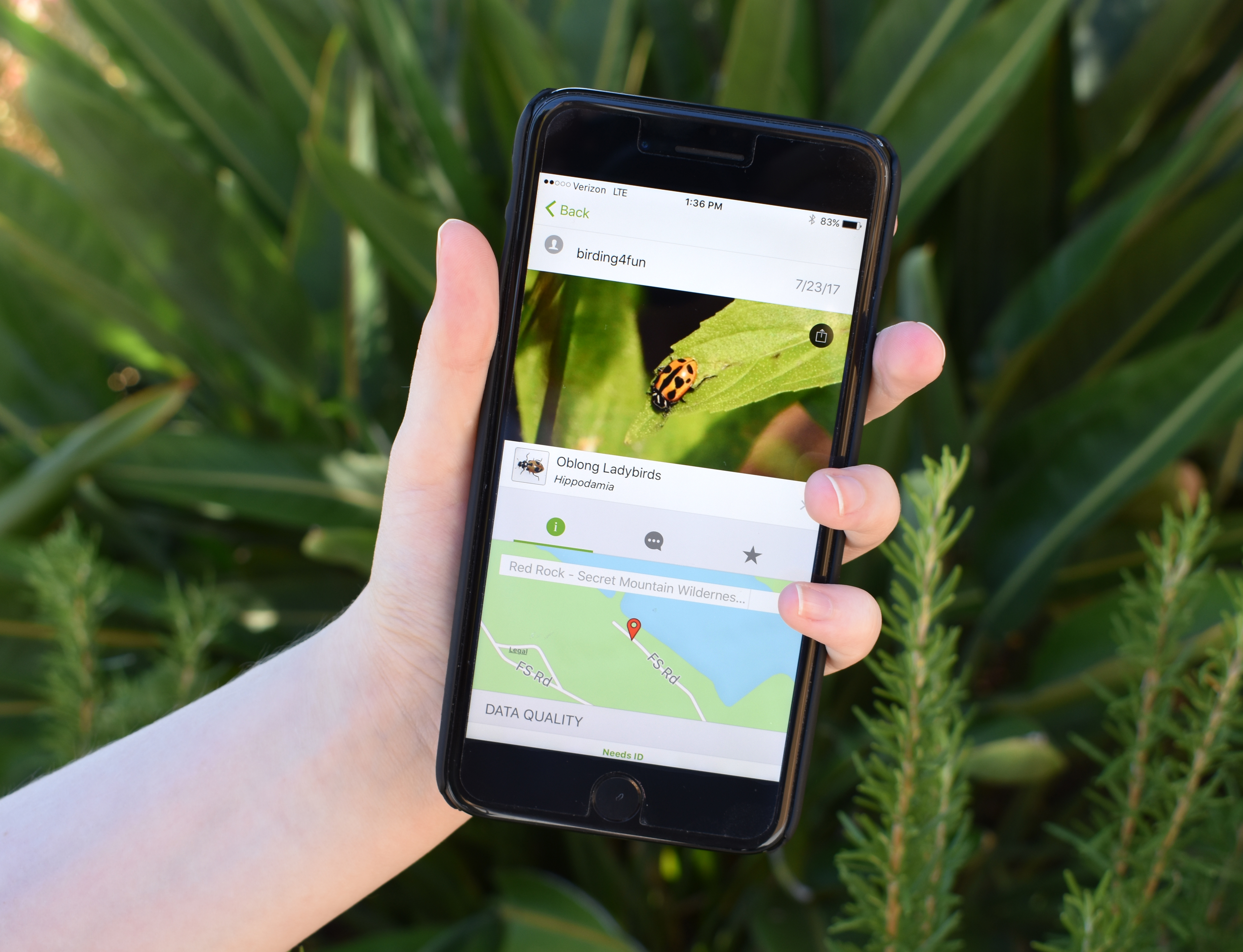Nature can be damaging and cause fear. Natural disasters like wildfires can change landscapes, communities and lives. But nature can also help us heal — instilling a calmness and peace in a sometimes-chaotic world.
As fifth and sixth grade students from Greenville Elementary School in Greenville, California, walked along Round Valley Reservoir on the Plumas National Forest, the trees still wore the black char from the 2021 Dixie Fire, California’s second largest wildfire. Though they didn’t seem to notice as they ran ahead of their elementary school and U.S. Department of Agriculture’s Forest Service chaperones.
But the adults in the group could still feel the loss. The black char represented nearly 1 million acres of forest burned, the devastation of their town of Greenville, and the loss of homes and communal spaces. The hillsides remained bare where the fire burned too hot.
There’s an academic term for this type of grief says, Blake Ellis, a program manager for the Chico State Ecotherapy Program. “Solastalgia — it is the grief you feel when your beloved place or home environment has been transformed beyond recognition. The mental, emotional and spiritual impacts of environmental degradation,” she said.
Ellis was first introduced to this type of communal loss during her master’s internship as a disaster case manager. She helped people impacted by the 2018 Camp Fire and supported them in some of their disaster recovery needs.
“With wildfires, there’s this particular kind of grief beyond just the loss of homes and belongings, which is incredibly painful,” said Ellis. “This loss of the home environment and the loss of this landscape, that they felt intimately connected with and attached to.”
Now Ellis facilitates ecotherapy sessions for groups, student, staff and faculty at California State University, Chico, state social services, and communities. She helps “promote the well-being of both people and the land, through guided therapeutic and restorative activities in local natural environments.”
Forest Bathing
Forest bathing isn’t an entirely new concept. It first came about in 1980s Japan, during a radical shift in the economy. New technology and businesses brought people from the green, forested, countryside to the big cities.
But there was an unintended consequence from this rural flight. Work and city cultures created high stress and people began getting sick. Stress-related illness and disease began to rise dramatically. So, government-funded research studies tried to uncover what was causing these health issues.
One of the research projects asked the question: “What happens when humans are exposed to forested environments?”
“The findings from that study informed this new practice called forest bathing,” said Ellis, who has spent years studying these topics.
“In regard to human health and wellness, they discovered that forest bathing helps us recover from stress and trauma by reducing our adrenaline and cortisol levels, and alleviating symptoms of anxiety and depression,” she said. “Forest bathing also decreases blood pressure, improves cardiovascular and respiratory function, and improves our sleep quality, mood, attention, academic performance, creativity and immune function. All this gets a boost when we spend time in forested environments. Some studies have uncovered that spending time in forested environments is even a preventive measure against cancer and disease.”
In Korea and Japan, forest bathing is part of the national health care program. It’s estimated that these practices save billions in health care costs annually.
“We always introduce the real human health benefits because it's important that people know how vital these spaces are and that we protect our forests, Ellisa said. “Because they are a resource and a center for healing.
“They are where we can come to heal”
Ecotherapy
Forest bathing or nature and forest therapy helps people slow down, awaken their senses and begin to relax and recover from stress. This practice helps people unplug, shut off the screens and start to develop that relationship and connection with nature.
Even land stewards who are literally outside all day, every day can benefit from slowing down and taking it all in.
“They’ll participate in nature and forest therapy and say ‘Oh my gosh, I started to see this landscape as work. I started to see all the projects that needed to be done.’” she said. “’And I forgot this important relationship of how just to sit in this place and be with it and appreciate it for where it is and what it is,’” said Ellis, recalling feedback from past forest therapy sessions.
People's reactions to forest therapy varies. With nature and forest therapy walks, people have wildly and vastly different experiences.
“Some might experience childlike wonder and play. Some might just relax for couple of hours. Other folks might have a lot of grief come up,” she said.
Ellis says these feelings of grief are often from past traumas that haven’t been totally recognized or processed.
“Unfortunately, in our society, we are forced to move at this unnatural pace constantly. We don't slow down even when the rest of the planet is slowing down, let's say in the winter,” Ellis said. “Some of our work actually speeds up. And whenever we finally slow down, we might actually have a lot of emotions come up that we didn't have the space or time or energy to deal with before. And that can be a good release."
The students from Greenville Elementary experienced their forest therapy session together and individually.
Some students laid down and watched the clouds drift by. They focused on their breathing or the feel of pine needles between their fingers.
Others closed their eyes and listened to the wind through the trees.
Some students went in search of treasure and found interesting sticks and big pinecones.
Others explored, running up and down the hillside.
A few students even used the charred bark to paint their faces, a kind of a metaphor for the work and healing that can happen through nature and forest therapy.
“For a community that’s been so devastated by wildfire, they can use signs of a wildfire in play,” Ellis said. “That’s got to be healing — to look at a burnt tree and not just feel the devastation of it but to see an opportunity for play and connection."
She added, “I think that’s the intention behind forest therapy with disaster-impacted communities, to give us a new lens to see these landscapes and have an opportunity to reconnect to these landscapes after they’ve been impacted by catastrophic wildfire.”
Later in the day, Jennifer Van Acker, who teaches the fifth and sixth grade students from Greenville Elementary, asked students to write a short reflection about their experience to share.
They liked the way they got to listen to the wind and smell the fresh air. Their favorite part? Being in nature and eating yummy snacks. They described their experiences as peaceful, relaxing and calming.
“It has helped me realize that when I’m stressed, I can go outside and listen to nature. And I can do this to calm my nerves,” Van Acker said. “You are very good at calming down the human brain. You made me realize that if you just take a moment in peace, you can feel so much better. You’ve showed me to get outside more often, even if it’s just for a few minutes… thank you.”
A Hard and Recent Past
Van Acker remembers when she first moved to Greenville in 2013.
“I just came for a visit, and I fell in love with the area. I fell in love with the community. Everybody looks out for everybody else. It’s just like a second family. And I thought I would love to live here. It’s beautiful here,” she said.
After the fire, everything was different. The landscape bare, the downtown destroyed. Van Acker, like many members in the community and students she teaches today, lost their homes.
“It’s a big deal because it’s not just your home, it’s your community too. Sometimes I find myself looking up at the burnt trees and I have to look down before my thoughts get carried away,” she said.
Van Acker learned about ecotherapy at an outdoor education training from Jamie Chambers, a partnership coordinator on the Plumas National Forest.
“She told me about Blake and that she offers ecotherapy to people that have gone through fires and has worked with people that were affected by the Camp Fire,” she recalled. “And we felt that maybe a forest walk in Greenville for my students would be a good thing, as a way to deal with hard emotions.”
At first, Van Acker was a bit scared of tapping into these feelings, dredging up all those memories.
“It was a little bit nerve-wracking, and I didn't want to become vulnerable in front of my students,” she said. “But I like how Blake set it up. She invited us to participate. And it wasn’t overly focused on the fire. Once I was able to relax, I was just left with this sense of serenity and acceptance from my students and colleagues."
An Extended Invitation to the Healing Process
Ellis hopes to expand these sessions to firefighters and other social services agencies in the future.
“In this region, people have just been so overburdened and stressed after a lot of these disasters. Our communities, social service agencies and firefighters truly bear the brunt of all of that,” Ellis said. “They're on the front lines and they also struggle with acute mental health issues, like suicide, depression and PTSD.”
She added, “We need to support and make space to acknowledge their pain and provide support because it's going to impact their mental health and wellness. And we have to support those folks who experience that kind of loss.”
For more information on ecotherapy program, visit Ecotherapy Program – Chico State (csuchico.edu).














